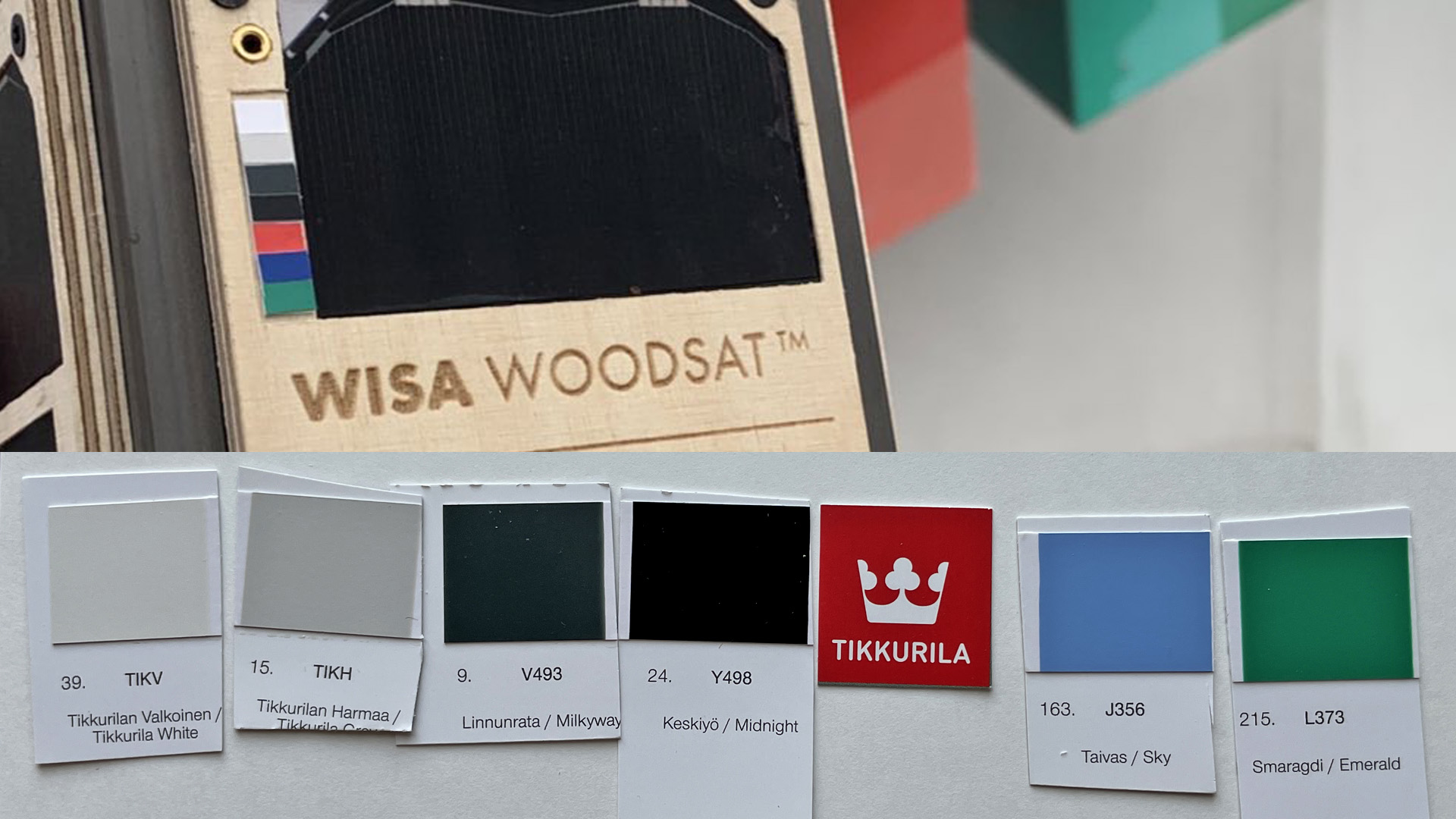

"We are ready to take our varnish to the final frontier", said Joonas Santala, Tikkurila's Marketing Director for Finland at the Heureka science centre on Saturday, just before the satellite test model was sent to the stratosphere.
The Tikkurila factories and headquarters are located in Tikkurila, a neighbourhood in Vantaa, where Heureka also stands.
Tikkurila's Temadur Clear polyurethane lacquer will be applied to two of the Woodsat side panels for comparison with the rest treated with atomic layer deposition. ALD is a modern and totally new way for giving wood a protective surfacing, while Temadur is the best "traditional" wood treatment can offer.
The plywood panels need to be treated for minimising the outgassing, release of gases from the wood, and for protecting the cellulose fibres against the harsh ultraviolet radiation of the Sun.

Additionally the knowhow Tikkurila has gathered in pigments and paints will be used for the colour calibration card that is necessary for calibration of the camera and adjusting the colours during the mission.
“We have been manufacturing paint for over 100 years, but never for this kind of use”, Santala mentioned. “This will be interesting! It’s really an honor to be part of this very Finnish mission.”
"For us having as much as the industries without a prior connection with space business is very important", continued WISA Woodsat mission manager Jari Mäkinen.
"Our goal is to show that space technology is not always so special, but something all high quality companies can do. There are many different kinds of applications in space and one of the expanding fields of space technology is coating and surfacing the materials. I'd like to see Tikkurila products used in future on other missions as well."
The small colour card will be on the front panel of the satellite, just aside a solar cell.
We’ll tell more about the “space lacquer” and colour card in our later blog texts.
